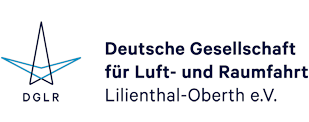DGLR-Publikationsdatenbank - Detailansicht
Autor(en):
Y. Yuan, M. Vayasi, S. Staudacher, G. Lamanna
Zusammenfassung:
Aircraft, relying on fuels that release water vapour as part of the exhaust flow, may potentially generate contrail cirrus thereby altering the radiative forcing of climate. The use of ultra-high bypass engines makes exhaust gas treatment in the core flow conceivable, due to its overall low contribution to thrust generation. Successful implementation of this concept is largely determined by the possibility of recovering water and its precursors from the core flow, while minimizing the corresponding pressure losses and optimizing the integration of the required systems into the engine and aircraft structure. The use of porous media for condensation of water vapor could significantly enhance water recovery while simultaneously reducing soot emissions. The opportunities and challenges of using porous media in an ultra-high bypass ratio are discussed from three perspectives. First, the boundary conditions set by the thermodynamic engine cycle are discussed including the expected degrees of saturation and the relevant thermodynamic exchanges rates. It is these considerations that lead to a first process design and target system parameters. Second, the Schmidt-Appelman criterion is employed to estimate the percentage of water recovery from the core flow, required to significantly reduce the probability of producing persistent contrails. This step is mandatory in order to set appropriate requirements for the efficiency of the water removal concept and identify suitable forms of porous media (or alternatively functional condensation surfaces), their placement and operating conditions. The main parameters describing them and their relevance for the process design are also discussed. Third, a 1D approach to generally model porous media is presented. Whilst a generalized modelling approach is conceivable, it turns out that the underlying main parameters are highly dependent on the porous media chosen. Simple scaling rules allowing the description of the performance of different media have not been found. Consequently, choosing a particular porous media calls for ad hoc numerical and experimental efforts to provide the data required to assess its impact on the exhaust gas treatment in an ultra-high bypass ratio engine.
Veranstaltung:
Deutscher Luft- und Raumfahrtkongress 2024, Hamburg
Verlag, Ort:
Deutsche Gesellschaft für Luft- und Raumfahrt - Lilienthal-Oberth e.V., Bonn, 2024
Medientyp:
Conference Paper
Sprache:
englisch
Format:
21,0 x 29,7 cm, 10 Seiten
URN:
urn:nbn:de:101:1-2412021506572.905181791980
DOI:
10.25967/630265
Stichworte zum Inhalt:
Water Recovery, Contrail, Porous Media, Performance
Verfügbarkeit:
Kommentar:
Zitierform:
Yuan, Y.; Vayasi, M.; et al. (2024): Opportunities and Challenges to use Porous Media for Exhaust Gas Treatment. Deutsche Gesellschaft für Luft- und Raumfahrt - Lilienthal-Oberth e.V.. (Text). https://doi.org/10.25967/630265. urn:nbn:de:101:1-2412021506572.905181791980.
Veröffentlicht am:
02.12.2024
